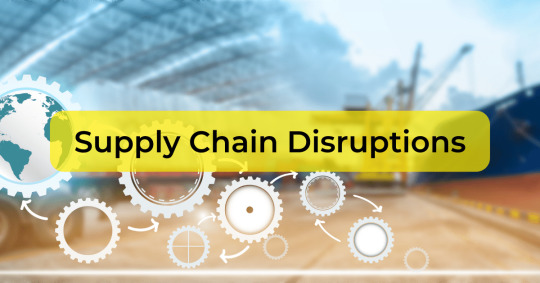#Build supplier risk matrices using AI
Explore tagged Tumblr posts
Text
Webinar | From Bottlenecks to Launchpads: How AI Is Transforming Product Compliance in Manufacturing
Is compliance slowing down your product launch? In this exclusive webinar, Certivo CEO & Founder Kunal Chopra unveils how AI is reshaping compliance from a bottleneck into a launch accelerator.
From eliminating manual document reviews to spotting expired declarations instantly, learn how top manufacturers are using AI to automate regulatory operations, reduce risk, and get audit-ready in hours.
🚀 Watch the full webinar here: https://youtu.be/r0J31TZYvc4
🌐 Learn more: https://www.certivo.com
🔖 Stay #AlwaysCompliant and #AlwaysMarketReady
#AI automation for regulatory compliance workflows#How manufacturers use AI for compliance efficiency#Reduce compliance risk with AI in manufacturing#Compliance automation webinar for supply chain leaders#Audit-ready document validation using AI#PFAS and EUDR compliance automation tools#Streamlining product compliance in medtech and EV#AI-powered compliance ROI for manufacturers#Build supplier risk matrices using AI#7-day pilot for AI compliance implementation
0 notes
Text
Strategies for Overcoming Supply Chain Disruptions

In today's interconnected global economy, supply chain disruptions have become a formidable challenge for businesses, often leading to significant operational and financial setbacks. These disruptions can stem from a myriad of sources: natural disasters, geopolitical tensions, market volatility, or even technological failures. The impacts are far-reaching, affecting everything from production timelines to customer satisfaction. In this dynamic landscape, strategic planning is not just advantageous but essential. It serves as a compass to navigate through these disruptions, minimizing risks and maintaining operational continuity. This introduction sets the stage for exploring effective strategies to identify, assess, and overcome the hurdles posed by supply chain disruptions.
Identifying and Assessing Risks
The first step in fortifying a supply chain against disruptions is to accurately identify potential risks. This involves a thorough analysis of the entire supply chain - from sourcing of materials to delivery of products. Businesses need to scrutinize each component, identifying areas vulnerable to disruptions such as supplier instability, logistical bottlenecks, or regulatory changes. Once potential risks are identified, the next critical step is assessment. This is where businesses evaluate the severity and likelihood of each identified risk. Tools like risk matrices or SWOT analysis (Strengths, Weaknesses, Opportunities, Threats) can be instrumental in this process, providing a structured approach to quantify and prioritize risks, setting the stage for developing robust mitigation strategies.
Building Resilient Supply Chains
Establish Strong Risk Management Protocols: Implement a comprehensive risk management strategy, including the identification, assessment, and prioritization of potential supply chain risks.
Develop Agile and Flexible Operations: Create an agile operational model that can quickly adapt to changes. This includes having contingency plans for logistics, alternative supplier arrangements, and flexible workforce management.
Invest in Robust Technology Solutions: Utilize advanced technologies like AI, machine learning, and blockchain to enhance visibility and predictive capabilities in the supply chain.
Foster Collaborative Relationships: Build strong partnerships with suppliers, customers, and third-party logistics providers to ensure a collaborative approach to managing disruptions.
Regular Training and Drills: Conduct regular training sessions and simulation drills for employees to prepare them for potential supply chain disruptions.
Continuously Monitor Supply Chain Health: Regularly monitor and review the health of your supply chain to identify potential issues early and adjust strategies proactively.
Successful Strategies from Leading Companies
Apple’s Strategic Supplier Diversification: Apple successfully managed disruptions by diversifying its supplier base, reducing dependency on single sources and minimizing the impact of regional disruptions.
Amazon’s Advanced Predictive Analytics: Amazon uses predictive analytics to anticipate demand fluctuations and supply chain disruptions, enabling them to stockpile inventory strategically and reroute supplies efficiently.
Toyota’s Just-In-Time (JIT) Model Adaptation: Following the 2011 earthquake and tsunami in Japan, Toyota adapted its JIT inventory model to increase buffer stocks and decentralize its supplier base, significantly improving its supply chain resilience.
Each of these strategies highlights the importance of foresight, flexibility, and technological integration in overcoming supply chain disruptions, providing valuable lessons for other businesses in the sector.
Future Trends in Supply Chain Risk Management
In the evolving world of supply chain risk management, experts forecast a significant shift towards advanced predictive and responsive strategies. The integration of artificial intelligence (AI) and machine learning is expected to revolutionize risk assessment, enabling more accurate predictions and timely responses. Blockchain technology will enhance transparency and traceability, mitigating risks associated with fraud and counterfeit products. The Internet of Things (IoT) will provide real-time tracking and monitoring of goods, transforming how logistics are managed. Sustainable and resilient supply chain practices will become increasingly crucial, driven by environmental considerations and consumer demands for ethical operations. Additionally, we may see a rise in collaborative risk management platforms, where companies share insights and strategies, fostering a more resilient global supply chain ecosystem.
Some FAQs Answered On The Relevant Topic
How can businesses effectively prepare for unforeseen supply chain disruptions?
Preparing for unforeseen disruptions involves a multi-faceted approach including maintaining a flexible inventory, diversifying suppliers to avoid over-reliance on a single source, and investing in technologies that offer real-time insights into supply chain operations.
What role does technology play in modern supply chain risk management?
Technology is crucial in modern supply chain risk management. It facilitates real-time data analysis, predictive modeling for potential disruptions, and enhances communication across the supply chain network.
Can small businesses manage supply chain risks as effectively as larger corporations?
Yes, small businesses can manage supply chain risks effectively by focusing on building strong relationships with reliable suppliers, understanding their supply chain in-depth, and leveraging technology to gain insights and enhance responsiveness.
In conclusion, mastering supply chain disruptions requires a strategic blend of advanced technology, proactive planning, and agile response mechanisms. The future of supply chain management lies in embracing technological advancements, prioritizing sustainability, and fostering collaborative relationships. Continuous improvement and adaptability are key to navigating the complexities of today's global supply chains, ensuring operational resilience and long-term success.
0 notes